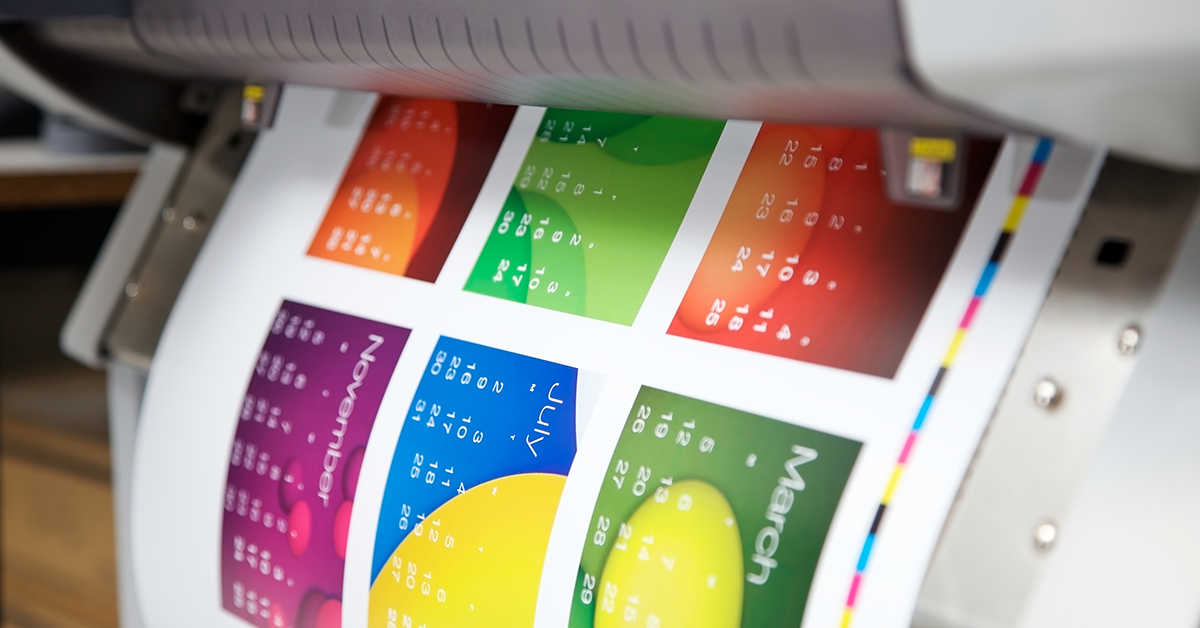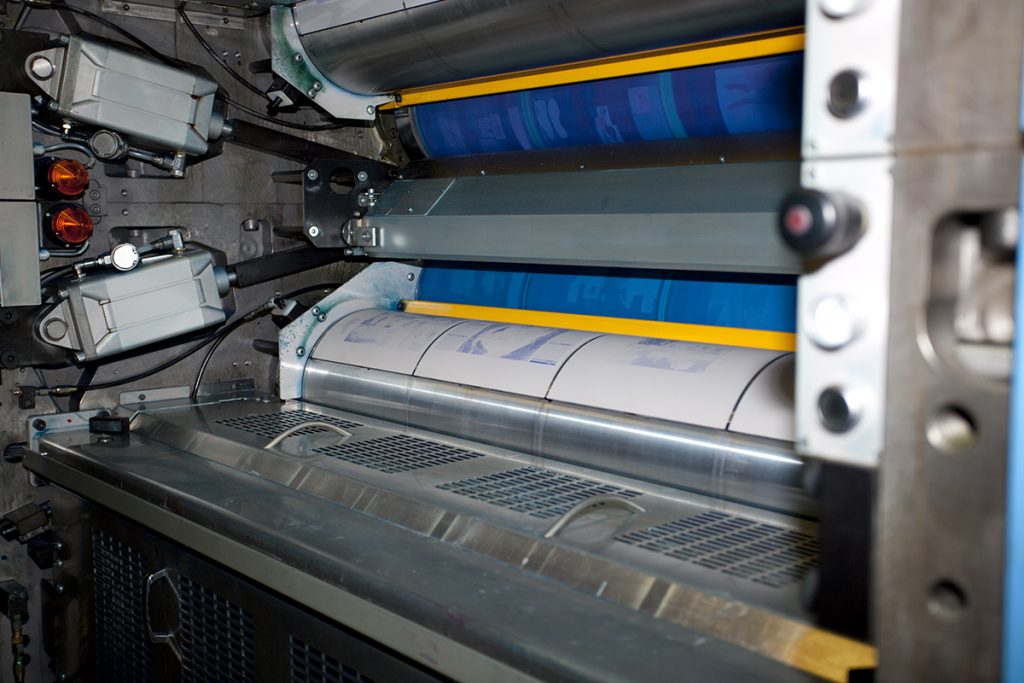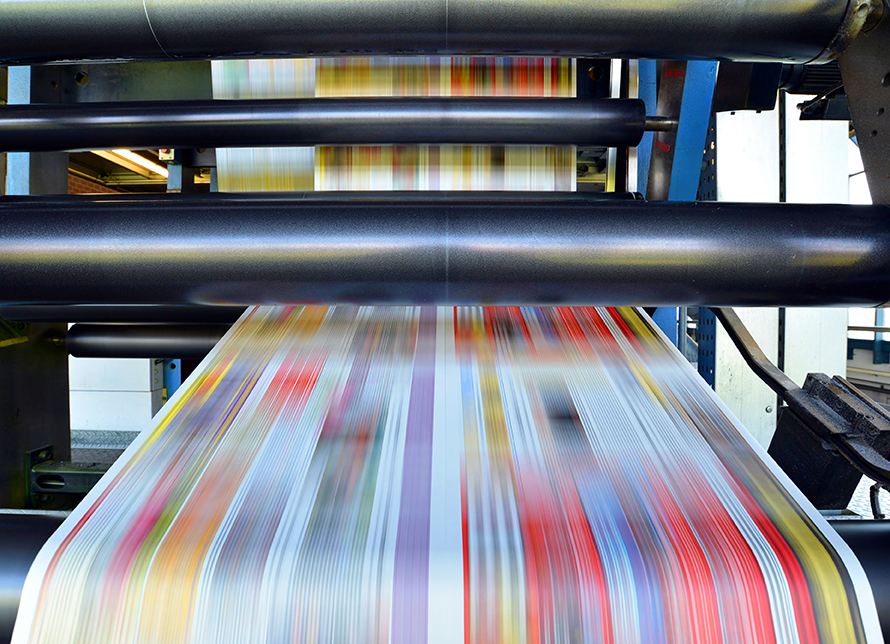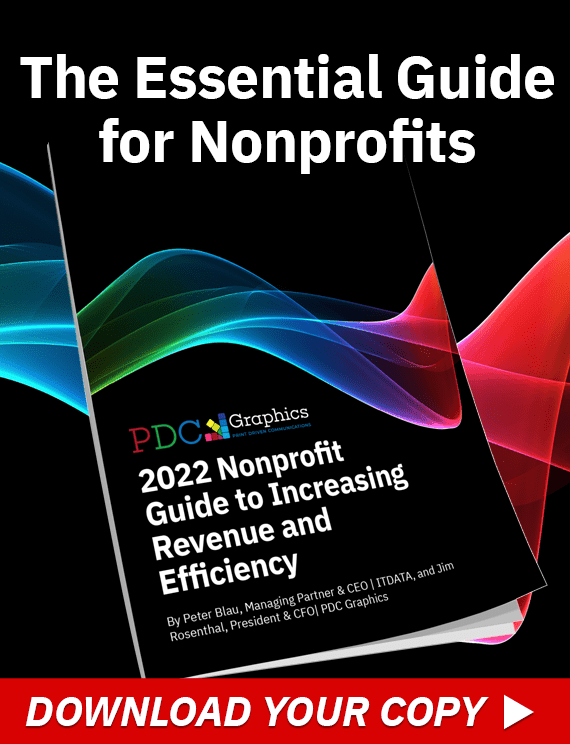
In the world of printing, the concept of digital printing is pretty much the new kid on the block. People have been printing things since the days of Gutenberg, and offset printing dates back to 1875, but digital printing technology as we know only goes back a few decades. Read on to learn the key differences between digital and offset printing!
Digital printing was a game changer, yet it hasn’t replaced offset printing. There are times when offset printing is the best choice for the job and others where you’re better off going digital.
In this blog post, we’ll explore the difference between offset and digital printing and the advantages of both methods.
What’s the difference between offset and digital printing?

The key difference between offset and digital printing can be summed up with a single word: plates.
Offset printing uses metal plates – typically aluminum – which transfer an image onto a rubber blanket, which in turn transfers the image onto a piece of paper or other printed material. Picture old footage of newspapers coming off the press.
There is typically much more setup involved with offset printing, and each new print job requires new plates. Once the customer’s order is setup to run on an offset press, every sheet that comes out of the press has the same image on it. In a modern state-of-the-art pressroom, these sheets come out at very high speeds – up to 18,000 sheets per hour.
There are no plates involved with digital printing, which means there is far less setup to get the first sheet out of the digital presses. Think of a professional digital press like a stronger, faster version of the laser or inkjet printer you use at home or at work.
Why should I use digital printing?
The benefits of digital printing include:
- Digital printing enables Variable Data Printing or VDP. Variable data printing harnesses the power of data to drive what appears on each page that comes out using powerful software and hardware. It’s
often used to print addresses, but also lets you change graphics or text that allow you to personalize your material for individual consumers – to drive unique messaging to each recipient. - Because there isn’t a lot of setup time involved in digital printing, you can usually expect a faster turnaround on your project.
- Digital printing is also ideal for short runs because of the setup speed and cost effectiveness. The smallest quantity you can print is one.
- Every print is identical – the first sheet that comes out will be at the same quality level as the last sheet.
- On the fly changes and error corrections are faster and typically easier to make than with offset printing. Overlooking an error on one of the plates during an offset print job can mean having to start the production process over again.
Why should I choose offset printing?

Meanwhile, the advantages of offset printing include:
- With offset printing, on longer run projects, you’ll
get more for your money. True, you’re spending more at the outset, but once
your plates are ready, you’ll actually spend less on larger offset jobs than
you would with digital. Most digital
presses are setup so that a printed item costs the same per piece no matter the
job size. - Offset printers run quite efficiently after
they’re set up, making them the ideal choice when you need larger quantities. - Offset printing can give you a large variety of
spot colors – analogous to paint chips from the paint store. You can mix custom
colors for each printing project, and work with things like Pantone colors and specialty
metallic and fluorescent inks. - Offset printing can print on the widest range of
paper substrates, and in some cases even on plastic and other specialty
materials.
If you still have questions about the difference between offset and digital printing or aren’t sure which printing method is right for your project, turn to PDC Graphics.
We’ve spent more than 20 years handling both digital and offset printing projects and are committed to making sure the most appropriate choice – offset, digital or a mix of both approaches is used to execute any project for our customers.

